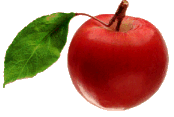
Rootstocks
I graft rootstocks in March and April, put them into two gallon pots (using West Creek Farms potting mix) in raised beds and fertilize them with Osmocote (slow-release 15-9-12 plus minors 5-6 months). The raised beds have an automatic watering system.
By September, these grafted trees are ready for sale as one-year whips (top). A one-year whip is sometimes called a 'maiden'.
If I grow it for a second year, it will be branched (below).
The final size of your tree on any of these rootstocks will depend on the vigour of the scion, soil type, amount of care given to the young tree (hours of sunlight, fertilizer, water, lime), pruning (summer versus winter) and whether it was staked properly.
An apple variety on M9 rootstock will produce a tree approximately 35% of a seedling tree, a tree on Bud 9 will produce a tree approximately 40% of a seedling tree, a tree on M26 will produce a tree approximately 55% of a seedling tree, a tree on M7 will produce a tree approximately 60% of a seedling tree, and a tree on MM106 will produce a tree approximately 70% of a seedling tree, a tree on MM111 will produce a tree approximately
80% of a seedling tree, a tree on Antonovka will be 65-85% of a seedling tree. Assume a seedling tree will grow to 30'. Sometimes I graft M9 interstems on the MM106 and MM111 r/s to reduce the size and to have a free-standing tree. But remember, as I stated above, estimating the final size of a grafted tree is a bit of a crap-shoot!!! There are so many variables.


Background:
In May of 2007, Traas Nursery of Langley, B.C., closed. Traas Nursery had been producing rootstocks for over 50 years. This meant propagators of fruit trees have had to find other sources. Some of the replacement rootstock came from Holland and some from the USA.
As of December 22, 2011, Many rootstocks cannot be imported from Europe . Malus, Pyrus, Prunus, Citrus, Olea, and many more are ALL restricted from the EU and many other countries because of the threat of a fairly serious wood-boring pest. The exception is any material that is 10 mm or thinner at its widest point.
Take a look at the links below (particularly the appendices of the Directive 11-01) for more information.
Malus spp. has been restricted entry into Canada, as it is a host species of Anoplophora spp. A directive to prevent the entry and spread of Anoplophora will be implemented on December 22nd, 2012,
D-11-01:Phytosanitary Requirements for Plants for Planting and Fresh Branches to
Prevent the Entry and Spread of Anoplophora spp. Canadian Food Inspection Agency
January 2020. There is a source of apple (B118) and maybe plum r/s, full bundles only, at Neufeld Brothers Nurseries in Agassiz in the eastern Fraser Valley. The Neufeld Brothers are focusing on hardy r/s for the Prairies. Right now (January 2020) they are sold out M9 and B9, but may have some B118 root stock and some grafted trees.
Spring 2020 orders are not being accepted yet.
Contact them at 604-796-3806 or 'behringera' and the symbol for 'at' and 'telus.net'
In Ontario, there is Steph Roth of Wellesley, Ontario, email 'steph' and the symbol for 'at' and 'silvercreeknursery.ca'. She will be taking orders for root stocks for those living in the East.
Steph Roth can deal with customers from all of Canada except B.C. For Canadian Food Inspection Agency (CFIA) regulations, she does not take orders from B.C.
On December 28, 2019, Steph told me her deadline for accepting orders for 2020 was December 31, 2019.
For 2021 (deadline for ordering December 31, 2020) she expects to import EMLA 106, Budagovski 118, Budagovski B9, OHxF 97, Myrobalan plum seedlings, Mazzard and Mahaleb cherry seedlings.
$3-4 per rootstock. It is cheaper if you buy a full bundle of 50 root-stocks of one kind. Prices will vary each year.
The price is dependent on the base price plus fumigating, packaging, shipping, handling, brokerage, HST, and the value of the Canadian $ vs the US $. Steph won't know the exact price until the root-stocks arrive and the bills are paid.
Another source of small numbers of root-stocks is the B C Fruit Testers Annual General Meeting (March 21, 2020). See 'Events, Spring' on this website and www.bcfta.ca
Rootstock characteristics: the following information is from 'Intensive Orchard Management' by Bruce Barritt, Washington State University. 1992.
M9: dwarf, precocious (sets fruit early), brittle roots, must be staked for the life of the tree
Bud 9: dwarf, hardy, precocious, must be staked for the life of the tree.
M26: semi-dwarf, not as precocious as M9, more winter-hardy than M9, susceptible to collar rot.
M7: semi-dwarf, not as precocious as M26, less winter-hardy than M26, better for wet soils.
MM106: 3/4 x standard, no staking needed, not good for wet soils.
MM111: 3/4 x standard, more winter hardy than MM106, best for dry soils, also good for wet soils, no staking needed.
Antonovka: 3/4 x standard, hardy, no staking needed.
Quince A will need an interstem of Old Home or Beurre Hardy between the rootstock and many pear varieties. For a list of pear varieties compatible with quince A rootstock, see the NCGR Corvallis Pyrus Catalogue:
https://www.ars.usda.gov/ARSUserFiles/20721500/catalogs/pyrcult.html
Old Home Farmingdale (OHF) does not need an interstem and is suitable for European pears, Asian pears, and some Perry Pears.
